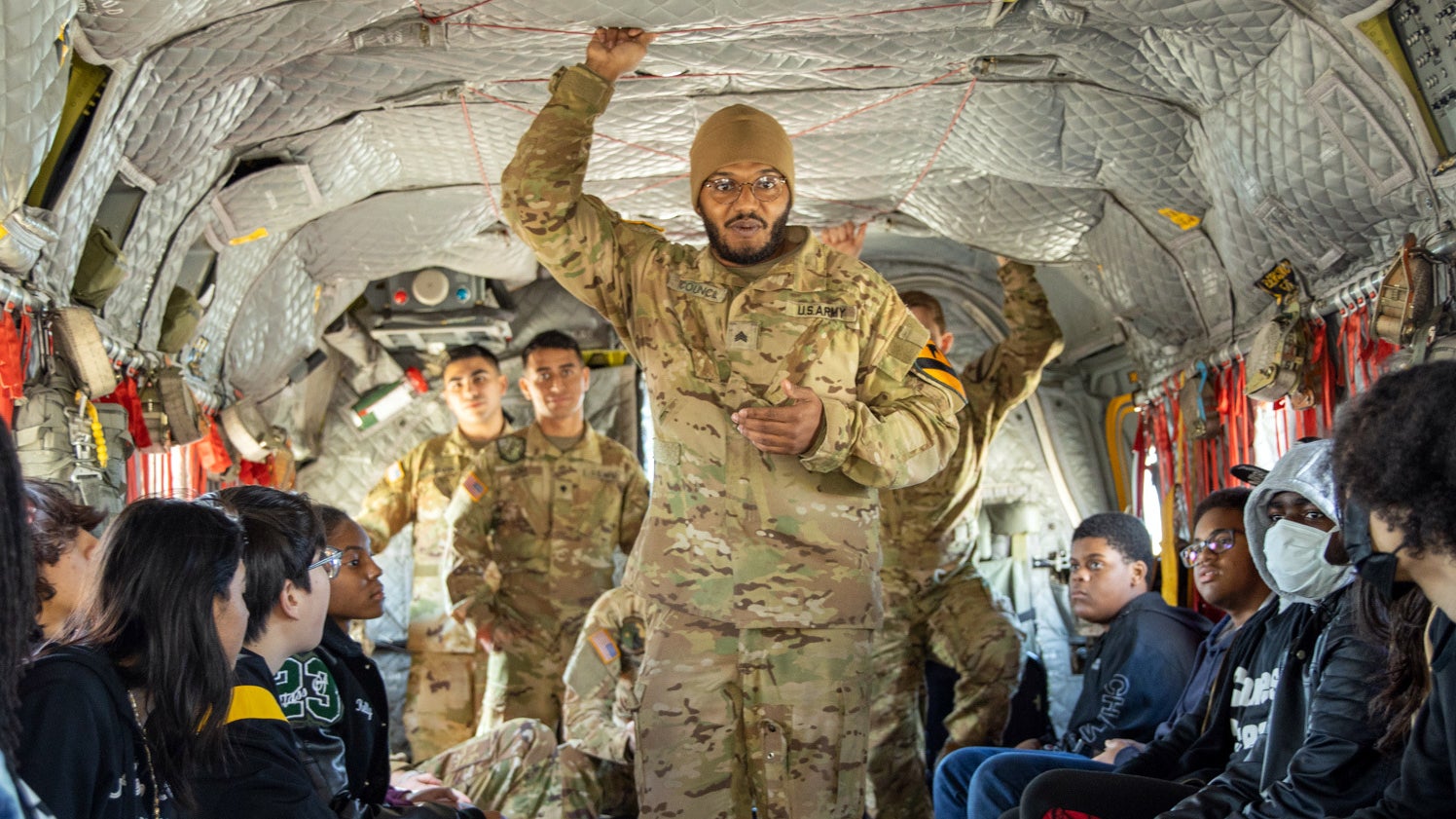Camarillo: Recruiting Remains ‘Existential Challenge’
Camarillo: Recruiting Remains ‘Existential Challenge’

Despite missing its recruiting goal in fiscal 2023, the Army is making progress in tackling what service leaders have called an “existential challenge,” Army Undersecretary Gabe Camarillo said.
“Recruiting is an existential challenge for our warfighters and for our Army,” he said. If the Army can’t recruit the talent it needs, the service will face “significant issues and problems,” particularly as it transforms for the future and contends with growing threats around the world, he said.
In fiscal 2023, the Army missed its recruiting goal of 65,000 new soldiers by about 10,000. Leaders have called it a “stretch goal,” and the target for fiscal 2024, which began Oct. 1, is about 55,000 new soldiers, Camarillo said. “It’s still a stretch goal, but it’s still one that we’re going to set for ourselves,” Camarillo said, adding that “the Army is smaller than we’d like for it to be,” and Army recruiters deserve “a lot of credit” for what they accomplished this past year.
The recruiting challenge faced by the Army and the other services was “many years in the making,” Camarillo said during a panel discussion at the recent Reagan National Defense Forum hosted by the Ronald Reagan Presidential Foundation and Institute.
Factors such a tight labor market, rising obesity rates, a declining propensity to serve and a lack of familiarity with what a military career entails, all contribute to the challenging recruiting environment, Camarillo said.
“All of this came to a head in 2022, when the Army missed its recruiting goals for the first time in several years,” he said. “We recognized very quickly that the data was showing that this was the start of a long-term trend if we didn’t do something to act very quickly to arrest it.”
In response, the Army has launched several initiatives, including the Future Soldier Preparatory Course, which helps prospective recruits meet the Army’s academic or physical fitness standards, and incentives for soldiers who refer someone who ends up joining the force.
It also is launching the “biggest recruiting transformation” since the creation of the all-volunteer force 50 years ago, Camarillo said. This includes expanding “who we’re prospecting,” Camarillo said. Today, 70% of high school graduates plan to go straight to college, leaving fewer high school graduates for the Army to compete for, he said. “We were self-limiting, in many ways, the available job market,” Camarillo said.
In the next three to four years, the Army’s goal is to have at least a third of its new contracts be young people with some college experience, Camarillo said.
The Army also is transforming its recruiting workforce. Talking to Fortune 500 companies, the Army found one key difference, Camarillo said. “They have specialized talent acquisition workforces,” he said. “We are going to create a more specialized workforce in the Army to take on these issues.”
Leaders also are working to dispel common misconceptions about military service. Many young people worry that Army service will derail or slow their life goals, Camarillo said. It’s up to the Army to showcase the many opportunities available to those who serve, he said.
As the Army works to improve its recruiting, the force also is “hamstrung” by the fiscal environment, Camarillo said. The Army is currently operating under a continuing resolution, a temporary measure that keeps funding at the previous year’s levels. There also has not been supplemental funding approved to support key operations in Europe and the Middle East. Without the supplemental, the Army is “funding the operations costs” to deploy soldiers to Eastern Europe and the Middle East to bolster America’s allies, he said. The same account also is used to pay for recruiting incentives, such as bonuses for high-demand MOSs, and media buys “months in advance” for Army marketing and advertising, Camarillo said.
Looking ahead, the Army is “trending in the right direction,” Camarillo said. “But we’re nowhere near where we need to be. This is a long-term challenge the Army is facing.”

